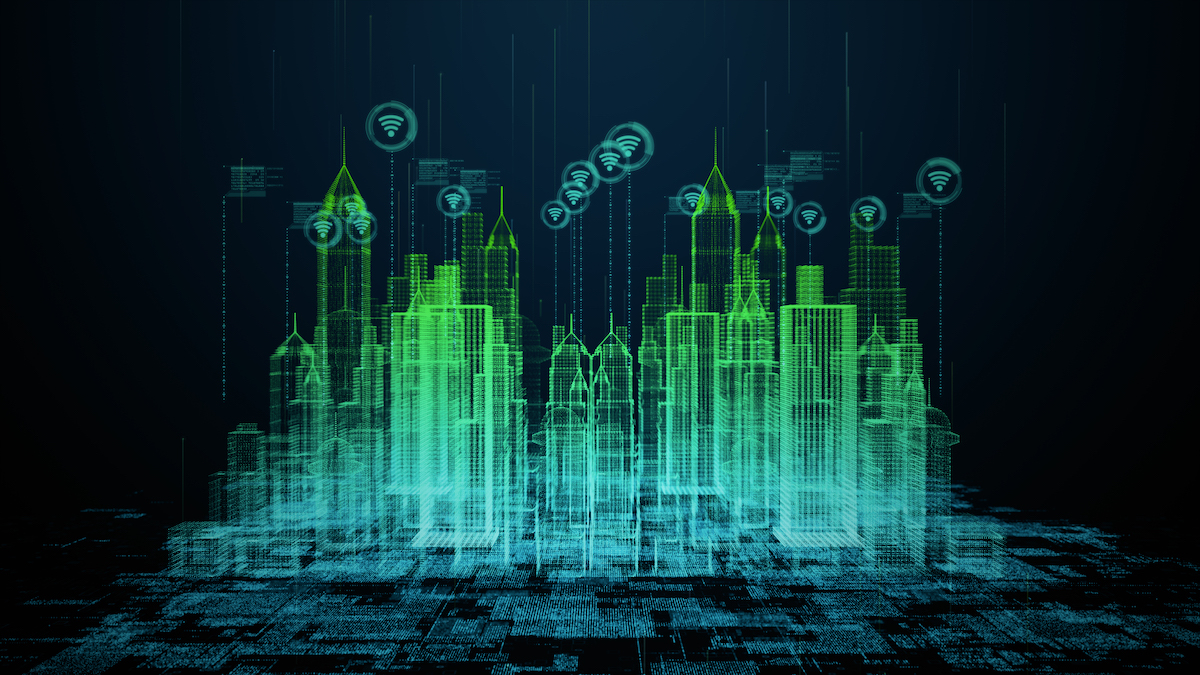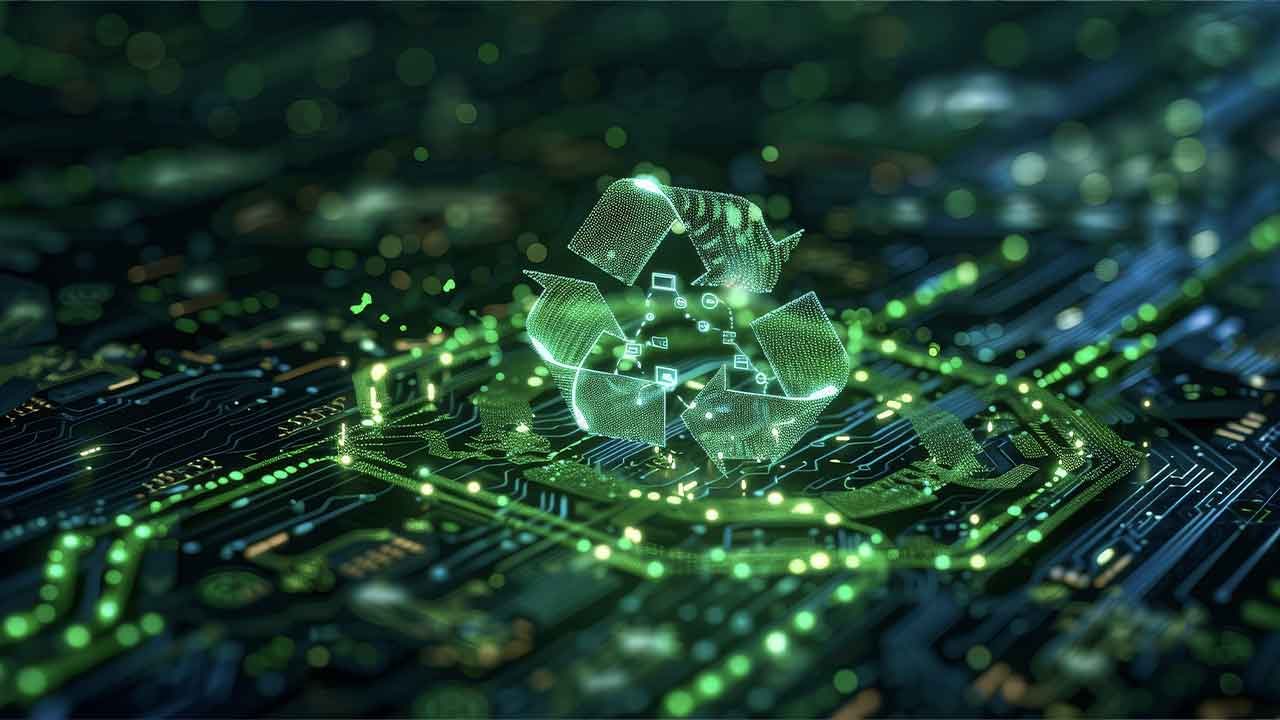The Role of 3D Digital Twins and IIoT on the Road to Decarbonization of Buildings
An interview with John Burton, CEO of UrsaLeo, focused on how 3D digital twins and IIoT technologies are being used to decarbonize buildings.
As governments around the world work on efforts to positively affect the negative impacts of climate change, the commercial building sector is creating an entire industry as well as enacting policy to drive building decarbonization.
According to a study conducted by the Center for Climate and Energy Solutions, fossil-fuel combustion attributed to residential and commercial buildings accounts for roughly 29 percent of total U.S. greenhouse gas emissions. While further efficiency gains will moderate future emissions growth and decarbonization, the increased use of appliances and electronics is expected to result in a net increase in greenhouse gas emissions by 2050. It’s these types of statistics that are raising alarms and bringing great minds together in the building management and construction sectors to find new ways to reduce carbon emissions in new builds and the millions of buildings that dot our landscape globally.
There are major opportunities to reduce emissions from buildings via greater energy efficiency through the use of technology. Capitalizing on those opportunities requires aligning incentives among builders, owners, and tenants to favor upfront costs that reduce both emissions and long-term costs.
John Burton, CEO of UrsaLeo, explains in this interview how 3D digital twins and IIoT technologies are being used in the battle to fight climate change and decarbonize buildings. His insights provide a deeper look into how technology integrated into the building management and construction industries are working to drive change.
More about The right representation of Digital Twins for Data Analytics and The Benefits of Using the Digital Twin in Manufacturing
Why do you believe there is such a strong focus on the decarbonization of buildings?
Most governments have aggressive goals to reduce carbon emissions and buildings are a huge source due to their high energy usage. Just looking at California alone, the Building Decarbonization Coalition lays out a plan for the state to cut building emissions by 20 percent in the next six years and 40 percent by 2030 — and to adopt zero-emission building codes for residential and commercial buildings by 2025 and 2027, respectively. Residential buildings produce roughly two-thirds of the state’s building emissions with commercial buildings producing around one-third. Additionally, government buildings are often targeted first as a way to showcase successes when they move to enact laws or put pressure on other companies.
Expect to see the construction/building and management space to continue to be aggressively targeted for decarbonization and “carbon neutrality” efforts and new policies that will disrupt climate change.
What role will technology play in helping to decarbonize buildings?
Technology has multiple roles to play in helping to decarbonize buildings. Firstly, you can’t reduce something you can’t measure, so sensors that are continually gathering data play an important role in understanding the environmental surrounding. Secondly, automatically controlling systems can make a huge difference, such as turning off lights when no one is in the room or turning off air conditioning and controlling temperature automatically where there aren’t occupants can make a big difference. Efforts to reduce electricity usage via technology will help to change this. Thirdly, equipment like HVAC systems can be made much more efficient by retrofitting outdated systems and requiring the installation of newer technology that operates more efficiently. Buildings can also create and scavenge energy through solar panels, heat pumps, and thermal panels and be built using materials that work to decarbonize not only during the construction phase, but also post-construction as a building operates. For example, California-based BamCore sustainably utilizes bamboo timber’s strength to green engineer a fully customizable, code-compliant, stud-less hollow wall framing solution. The company’s Prime Wall is greener, thermally superior, healthier, safer, quieter, and is more quickly installed than any other conventional building method and material available today. Companies like this, and many others, are answering the call for a greener and decarbonized tomorrow.
How will digital twins be used to optimize energy efficiency during the construction process?
During construction, 3D digital twins can be used to collaborate remotely, reducing the energy needed to transport people on site. They can also reduce construction mistakes by giving the workers a digitally visual plan of building architecture, which saves on time and energy costs.
For many contractors, understanding energy usage — not only in the building itself but across the varying machines and tools used to construct a space — is of the utmost importance. With tight margins squeezing profit from the bottom line, contractors are continually searching for solutions that will reduce cost using more effective energy saving technologies.
Beyond construction, what role will 3D platforms and digital twins play in the process of making a building go from carbon-positive to carbon-neutral?
Understanding what is happening in a building is much simpler if you are looking at a digital representation of the building, especially when it’s been enhanced with visualizations (e.g., showing energy usage in different parts of the building, temperature and humidity across varying rooms, etc.). With 3D interfaces that are connected to IoT platforms, building operators can make better, quicker decisions and directly control the building operation from both near and far.
Related topic:
- 3D Digital Twin used for decarbonization and energy management optimization
- IoT Innovation in Construction Industry
The Role of 3D Digital Twins and IIoT on the Road to Decarbonization of Buildings
There are major opportunities to reduce emissions from buildings via greater energy efficiency through the use of technology. Capitalizing on those opportunities requires aligning incentives among builders, owners, and tenants to favor upfront fees and the implementation of varying technologies that reduce both emissions and long-term costs. In this session, our speakers will explain how 3D digital twins and IIoT technologies are being used in the battle to fight climate change and decarbonize buildings.
During this interactive discussion participants will better understand:
- How the use of digital twins and IoT sensor data can help building managers better understand energy usage within a building or portfolio of properties.
- How an intuitive UI that is viewable from a desktop and/or mobile platform simplifies how energy is monitored and managed from anywhere and at any time.
- How future features will allow for control of the building while giving users the ability to set alerts when energy consumption exceeds normal thresholds.
Sponsored by UrsaLeo



